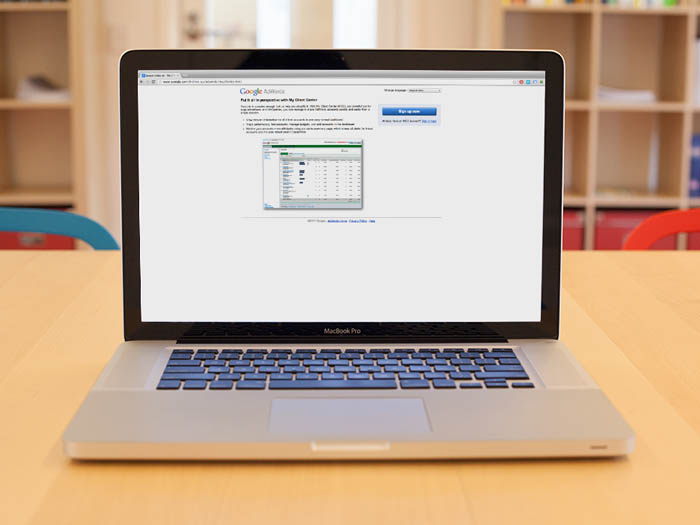Boost Your Google Ads Success with These Tips
Loves Data
Google Ads can be a powerful tool for driving traffic to your website, but getting the most out of it requires some know-how. With the right strategies, you can turn your Google Ads campaigns into a key part of your marketing plan. Understanding how to optimize various aspects of your campaigns can greatly improve your results.
One of the first steps to a successful campaign is choosing the right keywords. Proper keyword research helps you target the right audience and get more clicks. But selecting keywords is just the beginning. Crafting compelling ad copy that attracts and engages users is equally important.
Beyond keywords and ad copy, advanced targeting features allow you to reach specific groups of people who are more likely to be interested in your products or services. Finally, regularly analyzing and refining your campaigns is crucial to long-term success. By diving into your campaign data, you can identify what works and what doesn't, making necessary adjustments along the way.
In this article, we'll explore practical tips for each of these areas to help you improve your Google Ads performance. Whether you're new to Google Ads or looking to refine your existing campaigns, these tips will provide valuable insights to boost your success.
Mastering Keyword Research and Selection
To get started with Google Ads, it's essential to focus on the right keywords. Keywords determine when your ads will appear, so selecting the most relevant ones is crucial. Begin with brainstorming words and phrases that relate to your product or service. Think about what your potential customers might type into Google when they're looking for what you offer.
Steps for Effective Keyword Research:
1. Use Google's Keyword Planner: This tool helps you find keywords related to your business. It shows search volumes and how competitive each keyword is, giving you insights on which keywords might be the most effective.
2. Analyze Competitors: Look at what keywords your competitors are using. Tools like SEMrush or Ahrefs can provide this information. Targeting similar keywords can help you compete for the same audience.
3. Focus on Long-Tail Keywords: These are longer and more specific phrases. Although they get less traffic, they're often less competitive and can result in higher conversion rates. For example, "best running shoes for women" might be a better keyword than just "running shoes."
After compiling your list of keywords, it's important to regularly review and update them. Trends shift, and the keywords that work best for your campaign might change over time.
Crafting Compelling Ad Copy
Once you have your keywords, the next step is to create ads that attract clicks. Your ad copy should be clear, engaging, and relevant to the keywords you selected. Good ad copy encourages users to click on your ad and learn more about what you offer.
Tips for Writing Effective Ad Copy:
1. Use Strong Headlines: The headline is the first thing people see. Make sure it grabs attention and includes your main keywords. For example, "Buy the Best Running Shoes Today" is direct and keyword-rich.
2. Highlight Benefits: Tell users why they should choose your product or service. Focus on the benefits rather than just the features. For instance, "Enjoy Comfortable and Durable Running Shoes" highlights a clear benefit.
3. Include a Call to Action (CTA): A strong CTA tells users what you want them to do next. Phrases like "Shop Now," "Learn More," or "Get Started" can motivate users to click on your ad.
Also, consider using ad extensions like site links, call extensions, and location extensions to provide additional information. These can make your ad more noticeable and give users more reasons to click.
By mastering keyword research and crafting compelling ad copy, you're setting a solid foundation for your Google Ads campaign. Stick with these tips to improve your chances of success and drive more traffic to your site.
Utilizing Advanced Targeting Features
Advanced targeting features in Google Ads let you reach the most relevant audience for your ads. These features help ensure your ads are shown to users who are most likely to convert, making your campaigns more effective.
Advanced Targeting Techniques:
1. Audience Targeting: Google Ads allows you to target specific groups of people based on their interests, behaviors, and more. You can create custom audiences or use Google's predefined audience segments to reach users who are likely to be interested in your products.
2. Location Targeting: Specify where you want your ads to appear. You can target ads by country, region, city, or even a specific radius around a location. This is particularly useful for local businesses aiming to attract nearby customers.
3. Demographic Targeting: Adjust your ads to reach specific demographics such as age, gender, parental status, and household income. This helps to tailor your ads to the most relevant segments.
4. Device Targeting: Choose which devices you want your ads to appear on, whether it's desktops, tablets, or mobile devices. Device targeting can help you optimize your ads depending on how your audience prefers to shop or browse.
5. Remarketing: Target users who have already visited your website or used your app. By showing ads to people who’ve interacted with your business before, you can encourage them to return and complete a purchase.
By utilizing these advanced targeting features, you can make sure your ads are seen by the right people at the right time. This increases the likelihood of conversions and helps you make the most of your advertising budget.
Analyzing and Refining Your Campaigns
Continuous analysis and refinement of your Google Ads campaigns are essential for achieving long-term success. Regularly reviewing your campaign data helps you identify what works and what needs improvement.
Steps for Enhanced Analysis:
1. Review Key Metrics: Regularly monitor metrics such as click-through rates (CTR), conversion rates, cost per click (CPC), and return on ad spend (ROAS). High CTR indicates that your ad copy and keywords are effective, while conversion rates show how well your landing pages are performing.
2. Utilize Google Analytics: Integrate Google Analytics with your Google Ads account to gain deeper insights. Track user behavior on your site post-click to see which ads drive the most engagement and conversions.
3. Perform A/B Testing: Continuously test different versions of your ads, landing pages, and even keywords. Small changes, like altering a headline or CTA, can result in significant performance improvements.
Refinement Tips:
1. Adjust Bids: Modify your bids based on your campaign performance data. Increase bids for high-performing keywords and decrease them for underperforming ones.
2. Refine Targeting: Use the data from your campaigns to fine-tune your targeting settings. Exclude non-performing audiences and focus more on segments that offer the best results.
3. Optimize Ad Copy: Update your ad copy based on performance insights. Highlight different benefits or features to see what resonates best with your audience.
By continually analyzing and refining your campaigns, you can improve their effectiveness and ensure better return on investment.
Conclusion
Implementing the right strategies in your Google Ads campaigns can significantly boost your success. By mastering keyword research, crafting compelling ad copy, utilizing advanced targeting features, and continuously analyzing and refining your campaigns, you ensure your ads reach the right audience and achieve your marketing goals.
Every aspect of your campaign, from keywords to targeting, plays a crucial role in its success. Keep learning and adapting your strategies based on performance data to stay ahead of the competition.
Ready to take your Google Ads knowledge to the next level? Visit Loves Data today to explore our online courses that include Google Ads training. Enhance your digital marketing skills and boost your campaign performance with expert training from Loves Data. Start now and see the difference!




Comments